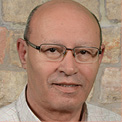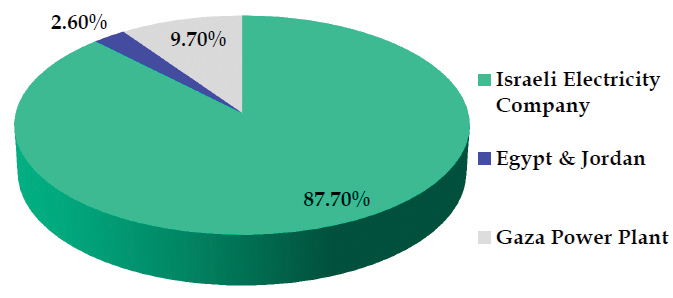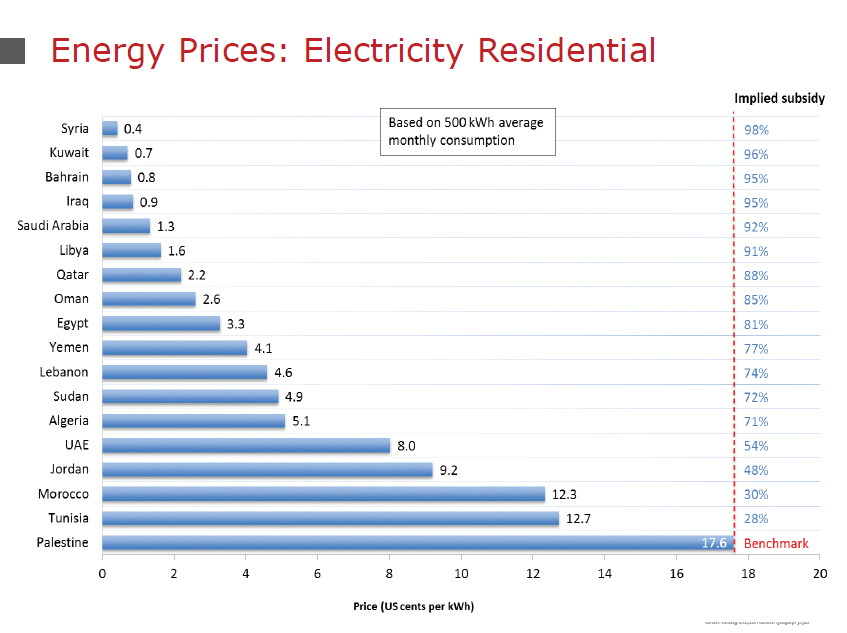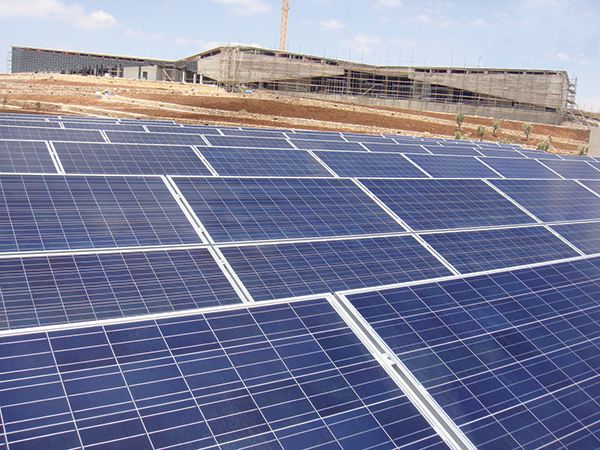
Preamble
In the heart of the northern Jordan Valley in Palestine, there is a small obscure village of shelters and tents called Al-Farsiya. Al-Farsiya was demolished by the Israeli army in the summer of 2010 as part of Israel’s efforts to remove Palestinians from the Jordan Valley. Many residents have left the area, but a few people still live there, surrounded by four Israeli settlements. A few months ago, a very young, sick girl had a life-threatening aggravated asthma condition that required the immediate installation of a ventilation unit. With the help of a local NGO, the ventilation unit was installed in her home, but the family had no means of access to a stable source of electricity to operate the unit. To make matters worse, because the area is part of a closed military zone, there was no hope of obtaining connection to the grid. Luckily, the girl’s case was publicized, a small solar-electricity-generating unit was installed to meet her needs of electricity, and now this girl enjoys not only more than sixteen hours of ventilation, but also access to a TV and cold water from the fridge.
Renewable Energy (RE) sources are abundant everywhere. Increasingly, even oil-rich countries are investing heavily in this sector. Some people may ask why countries like Saudi Arabia would invest in RE, considering the wealth of their oil reserves. The answer is simple: oil reserves are finite, while RE sources are eternally infinite – and cheaper. So what do we mean when we think of RE?
RE is any energy generated from natural resources such as sun, wind, water, waste, and geothermal energy. For example, electricity is generated from sunlight using photovoltaic cells that are widely available in the market, and wind speed of more than six meters per second can be transformed into electricity by using proper wind turbines. Geothermal energy is generated from heat that exists naturally inside the earth by drilling deep into the ground and capturing this heat at around 150 meters, or more, beneath the surface. Generating hydroelectric energy from oceans, lakes, and rivers is the most conventional RE method and has been used for many years. Biomass energy refers to energy generated through the burning, decomposing, and gasification of solid waste.
Rich Sources, Poor Supply
Palestine is characterized by a Mediterranean climate with long and dry summers and cool, short, and rainy winters. Temperatures reach up to 35°C in the summer and often fall down to 0°C in the winter. These conditions are perfect for generating an optimal amount of electricity per square meter from sunlight, year round. According to the Solar Atlas of Palestine,i recently released by the Palestinian Authority, the sun irradiates 2,000-2,100 kilowatt hours (kWh) per square meter annually. In fact, according to the same source, if a solar system of 1 kWh capacity is installed, it is expected to yield at least 1,750 kW of electricity annually, which is an equivalent to US$ 275 of production at current consumer prices.
♦ A solar plant with a capacity of 998 kWh in Jericho will require 13 dunums of ground space and costs around US$ 1.5 million, including full operational maintenance for 25 years. The plant will produce 29,947 MW during its life time of 25 years, currently a value of US$ 5.1 million. The payback period for the investment is 69 months, the Internal Rate of Return (IRR) 19.65%, Return on Investment (ROI) 215.07%, and Net Present Value (NPV) US$ 732,071. Such financial ratios are very hard to find in most other investments in Palestine.
While sunlight is abundant for more than 315 days a year in Palestine, winds with the speed of six to seven meters per second, required for the generating of electricity, are only available in pockets alongside a narrow north-south corridor that passes through the cities of Tubas, Nablus, Ramallah, Jerusalem, Bethlehem, and Hebron in the West Bank. Wind speeds in other areas and along the shores of Gaza are much less.ii
Generating energy from biomass, i.e. solid waste from animals and humans, through waste-to-energy facilities is of very high potential in Palestine with a productive capacity of 800 gigawatts annually,iii which is equivalent to fifteen percent of the annual consumption.
Geothermal energy production has been tried twice to heat/cool commercial buildings locally, but we have no data about its performance as of today.
Energy Dependency With Highest Cost
Palestine is almost completely dependent on Israel for its supply of electricity and fuel. The electricity-load forecast for 2015 shows that Palestine will need a total of 1,197 megawatt hours of electricity, with 87.7% of it coming from Israel, 2.6% from Jordan and Egypt, and 9.7% from the Gaza power plant.
But dependency on Israel for the supply of energy is risky and politically insecure, as Israel is becoming less and less able to supply enough energy to cover demand. In fact, the Israeli electricity supplier to the Palestinian distributors has been threatening for the past few months to shut off supply, and has done it at least once in the areas of Jenin, Tulkarm, and Qalqilya. Moreover, this dependency is very expensive, as Israel supplies electricity to the Palestinians at a cost of US$ 0.11 per KWh, while the Palestinian distributors sell it at an average of US$ 0.17 to the consumer. Even if the security of supply were to be guaranteed, it is very important to highlight that Palestinians pay the highest electricity tariff in the region.
RE Fuels Energy Independence
According to forecasts published by the Palestinian Authority, consumption levels of electricity are expected to rise by seven percent annually, assuming that there is no significant increase in energy demand from the industry sector in terms of its percentage of overall needs compared to the current levels. This means that without finding other sources of energy supply, dependence on Israel for providing energy security will in fact increase in the coming years, rather than decrease. Given the Palestinian thirst for economic independence, investment in RE is not only economically and environmentally important but also politically advisable as an excellent tool to decrease dependence on Israel. Using RE is possible, prudent, and doable – with little effort, openness, and promotion from the Palestinian Authority; it would need, however, a speedy reform of the policy, regulatory, and investment environment in order to encourage the private sector in Palestine, as well as international investors, to start investing in the sector.
♦ Last summer, the Qalqilya community was outraged by frequent and long power outages that occurred almost daily. The city needs 17 MWh of electricity for its current consumption needs, while Israel offers only 13 MWh and has been refusing to increase its supply since 2012. The mayor of Qalqilya is now pushing to make up for the Israeli-caused shortage by installing solar systems on the rooftops of public buildings, asking his heavy electricity consumers to do the same, with the aim to install a capacity of 7 MWh in 2-3 years.
It is very crucial to view RE from a political perspective: Every kW generated from RE in Palestine, will certainly be a kW less of the supply from Israel. Still, it is yet to be seen if the regulator and the Palestinian Authority will consider meeting the challenge of gradually decreasing the volume of electricity imported through a leap forward in policies, procedures, and incentives.
One Small Step is Not Enough
Palestinians have extensively invested in water heating through solar energy, with seventy-five percent of Palestinian homes currently connected. While this coverage might be the largest in the region, we are yet to see further growth in the use of solar water heating as a primary source of hot-water supply for non-residential use such as heating commercial, industrial, and touristic establishments.
While the figures are satisfactory for the usage of solar water heating, investment in generating electricity through solar photovoltaic technology, SPV, is far from satisfactory. Unfortunately, there are no accurate statistics about the combined installed capacity of SPV, but it hardly exceeds 5 MWh, which amounts to less than 0.5% of the current electricity consumption level. This is despite the fact that the Palestinian Authority in 2012 released its RE Strategy in which it stated its commitment to license, by 2020, a total installed capacity of 130 MWh of electricity from all RE sources (10% of the forecasted electricity need).
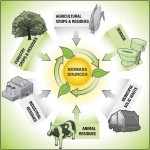
The almost negligible growth in investment in RE is mainly due to the lack of an investment-enabling environment, such as enforced policy and regulatory frameworks, as well as lack of incentives from the government, and lack of access to cost-effective financial facilities. High startup cost and the prevailing relatively modest knowledge and awareness of the return on investment exacerbate the problem. But in fact – and contrary to prevailing impressions of low return on investment in RE – a review of more than fifty feasibility studies of RE projects has revealed that the return on investment in RE amounts to at least 14.5% annually, which is much higher than the return on investments in most sectors in Palestine and the region.
♦ Gaza needs an average electricity supply of 430 MWh, with a peak of 500 MWh during summers. These days, Gaza receives only 208 MWh, at its best (120 MWh from Israel, 28 MWh from Egypt, and 0-60 MWh from the Gaza Power Plant), which accounts for 45% of its electricity need. If and when, in a national drive, solar power is installed on rooftops and a biomass energy facility is built, RE can be a life saver for Gazans.
Policy, Regulatory and Investment Envirnment
Foundations of RE
The RE sector is regulated by a recently ratified law which, in the author’s opinion, failed to provide the platform necessary for unleashing the full potential of this sector. Hopefully, bylaws will be issued that compensate for these shortcomings by addressing the critical issues that are facing the investment environment in this sector, such as tariffs on electricity produced from RE sources and incentives for investors. Currently, the Palestinian Authority offers to buy electricity from RE investors at prices that are lower than those imposed by Israel. It is of utmost importance to reverse this practice, as it will certainly deter investors.
In Palestine, investment in RE is viable and offers investors an excellent opportunity to achieve better financial results, especially for owners of commercial and industrial establishments who choose to generate electricity for their own consumption. Instead of buying their needed electricity from the local distributor at prices that could be as high as US$ 0.18 per kWh, companies could produce it at zero cost, recover their initial investment in four to five years, and enjoy an electricity yield at no cost for twenty-five years, the expected lifetime of the SPV.
Investment in Biomass energy is another promising endeavor. Not only would it save fifteen percent of the energy imported from Israel, it is also a potentially strategic solution for the ever-growing solid-waste management problems. Currently, more than 5,500 tons of solid waste are produced every day in Palestine, an amount which is growing annually at a rate of five percent. Investing in waste-to-energy projects will save landfills, rescue the environment, and supply energy at a very low cost.
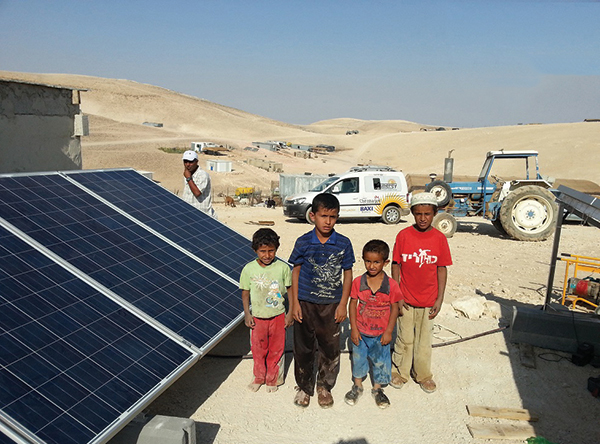
Yes, We Do Have Space for RE!
Due to limited productive efficiency of solar photovoltaic cells, which is currently at 15%-16.5% for the most popular technology, each kWh of installed capacity requires a free space of eight to ten square meters. Using this figure, it is often said that exponential growth in RE cannot be achieved in Palestine due to the lack of land needed to invest in (relatively) Mega projects – especially since Israel is controlling more than sixty percent of the land (Area C). I believe this is not true. RE is not only about “Mega” projects but also small to medium ones.
Let’s imagine the following scenario: the Palestinian Authority has created the proper set of policies, procedures, and incentives for the residential sector to invest in RE. It will be very easy to generate 100 MWh on the rooftops of residential buildings; assuming that each household will install a SPV system of 5 kWh capacity (which requires about 45 square meters of free roof space), 100 MWhs can be generated by 20,000 homes all over Palestine. Moreover, the commercial and industrial sectors could contribute at least another 100 MWh if 400 establishments were to invest each into a SPV system of an average capacity of 250 kWh. Additionally, the Palestinian Authority has announced plans to invite investors to invest in ten SPV systems with an average capacity of 10 MWh each. Combining the electricity generated by these three sources, 300 MWh could be generated – the required PVS could be installed in 18 months – which could lead to an immediate reduction of dependence on Israel by 25%.
♦ The solid waste generated in Gaza amounts to 2,000 tons/day, which (via a waste-to-energy project) can produce enough electricity to balance Gaza’s energy deficit – at a production cost of less than US$ 0.02/kW.
It is important to keep in mind that with a little bit of time and effort Palestine could witness the realization of its RE potential, which would put its energy security on solid ground. In fact, Palestine could eventually be on par with world leaders in RE such as Germany, which recently set a new record in electricity consumption from RE with seventy-eight percent of the country’s consumption coming from green energy (solar, wind, biomass, and hydropower). It is hoped that the RE movement in Palestine gains enough momentum so that one day children all over the country have access to electricity generated in Palestine, just like that little girl in Al-Farsiya.
» Dr. Hasan Abu-Libdeh is the founder and chairman of the Federation of Renewable Energy Industries (FREI) and CEO of Sunergy for Renewable Solutions.
i Palestine Energy Authority,(2014), Atlas of Solar Resources of the Palestinian Territories, Report No. 126-01/2014– DRAFT.
ii Palestine Energy Authority, (2014), Wind Atlas of Palestine.
iii Abdelrahim Abusafa, (2015), Potential of Biomass as an Alternative Fuel in Palestine- Amounts and methods of conversion, presented at Fifth International Energy Conference, Ramallah, Palestine.

